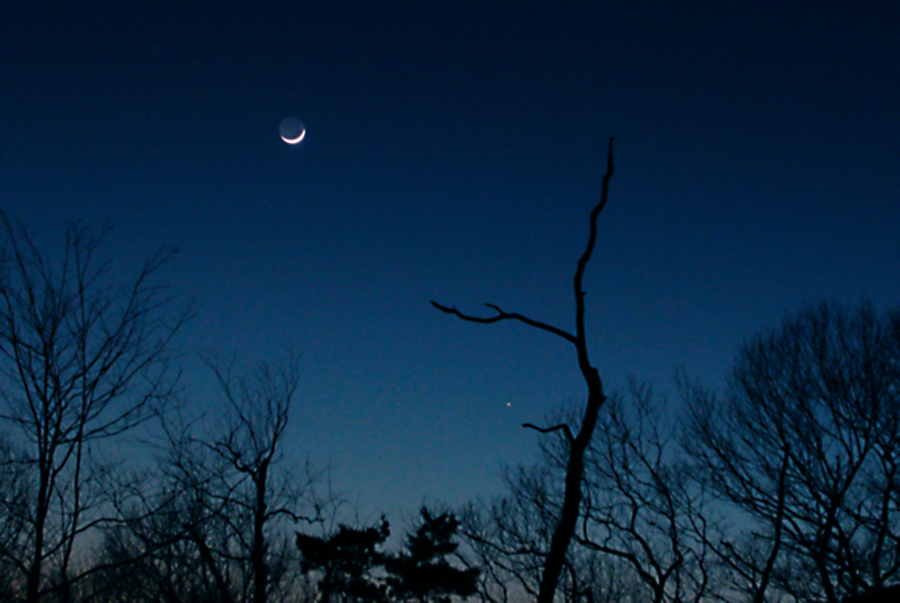| |
 |
I wonder what percentage of the
human race has ever seen the planet Mercury. The innermost planet has been observed
since ancient times, but it is not as easy to see as the other bright planets
because it is always fairly close to the Sun. During some of its 88-day orbit, it is
too close to the Sun to be seen at all, but sometimes it is visible in the
eastern sky before sunrise, and at other times in the western sky after
sunset. To see it, you just need to
know when and where to look, a clear sky, and a good view of the horizon.
This picture shows Mercury (the
star-like object in the bottom center of the picture) in the west about 45
minutes after sunset, along with the crescent Moon. Mercury usually has an orange hue,
probably due partly to its surface color and partly to the reddening effect of
the earth’s atmosphere so close to the horizon.
Image details: 1-second exposure at ISO 400 with a
Nikon Coolpix 5000 camera at a focal length of 21 mm.
March 22, 2004
|

